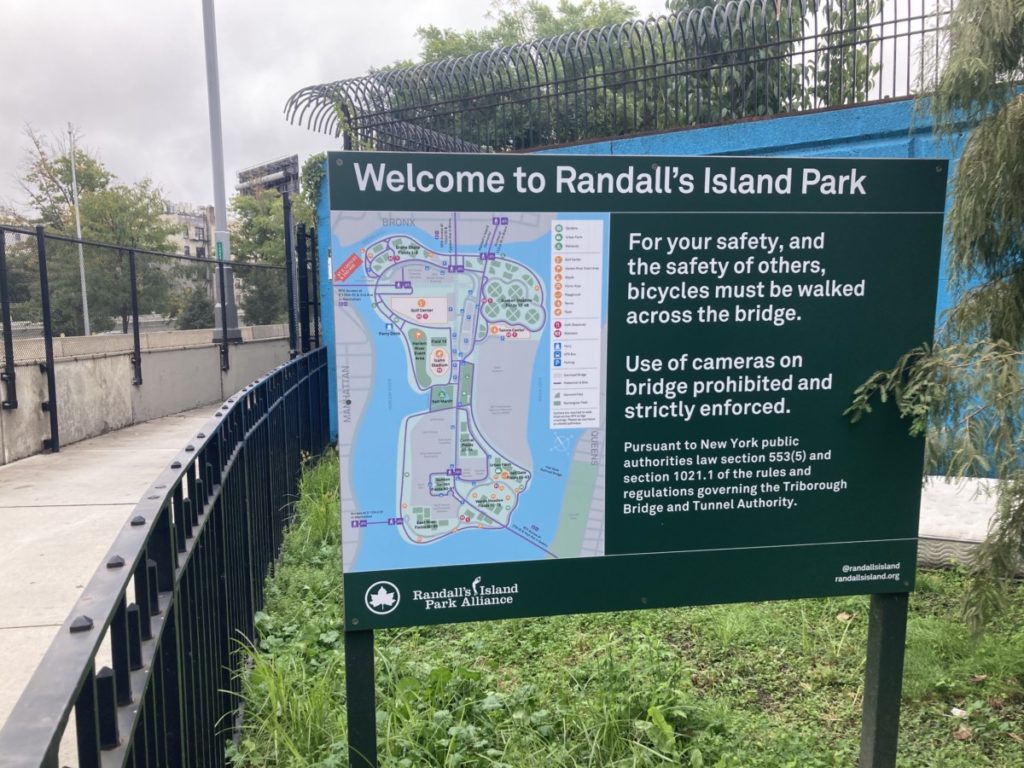
After consecutive days of rain, Mayor Eric Adams announced last Monday that his administration would be moving the tents, or Humanitarian Emergency Response and Relief Centers as they are more officially known as, designed to temporarily house migrants coming into New York from the southern border, from Orchard Beach to Randall’s Island due to flooding. Over the past few weeks, the administration has struggled to keep up with the unprecedented number of migrants arriving in New York and this move has once again sparked criticism from many city council members and immigration advocacy groups.
Randall’s Island is a 530 acre isolated landmass located east of Manhattan, south of the Bronx, and west of Queens. Similar to Orchard Beach, part of Randall’s Island is located in a flood zone, and lacks access to public transit. The only way to get to the island is to take the M35 MTA bus accessible at 125th Street and Lexington Avenue in Manhattan, or walking or driving over the bridges.
In a statement Wednesday, city council members including, Councilmemeber Diana Ayalya (D-Manhattan/Bronx), Councilmember Shanaha Hanif (D-Brooklyn), and City Council Speaker Adrienne Adams (D-Queens), came together to denounce the HERRC proposal and offer new ideas to shelter the incoming migrants.
“People seeking asylum, searching for safety and stability, face a backbreaking journey to New York City,” said Councilmember Ayala, whose district includes Randall’s Island. “We must find a way to help and provide them with adequate shelter, and putting them in another location that is a carbon copy of the Orchard Beach location is not a suitable one.”
In 1981, New York City established a Right to Shelter law which mandates the city to provide shelter to anyone seeking it. There are a number of standards that a shelter is required to include such as: a bed 30 inches in width; a clean, comfortable, well constructed mattress; and lockable storage units. Councilmembers have questioned the Adams Administration to ensure the tents don’t circumvent the basic shelter standards in this law. However, the administration believes the HERRCs do not comply as they are not permanent shelters, but instead used for emergency temporary relief to better understand the further needs of each individual, allowing a maximum stay of 96 hours.
“Any facility used to house asylum seekers overnight must be a brick and mortar building. The outdoor tent city model is unnecessary when there are other options, and it simply will not work,” said Councilmember Hanif, Chair of the Immigration Committee, in Wednesday’s statement.
The council members urged the Adams administration to use hotels and other unused buildings to house the migrants. They also provided a list of ideas to free up space in the DHS shelter system.
“This is a crisis that does not come with easy solutions, but it is our collective responsibility to collaboratively confront it,” Speaker Adams said in Wednesday’s statement. “The Council is committed to being a constructive partner to address these complex challenges, providing longtime unhoused New Yorkers and people seeking asylum with the support they deserve that can benefit us all.”
As of Friday, New York City has welcomed over 17,000 migrants being bussed from the Texas border by GOP Governors Greg Abbott and Ron Desantis. Anywhere from four to six buses arrive daily, unannounced, and without coordination with the southern governors at New York’s Port Authority Bus terminal.
A lack of time to plan, as well as diminishing shelter availability and resources for the many migrants arriving, forced Mayor Adams to declare a State of Emergency on Friday.
He estimates the migrant crisis will cost over $1 billion dollars this year alone, and declaring this emergency allows the city to seek financial aid from both the federal and state governments.
“We now have a situation where more people are arriving in New York City than we can immediately accommodate, including families with babies and young children,” Mayor Adams said in a public address on Friday. “Once the asylum seekers from today’s buses are provided shelter, we will surpass the highest number of people in recorded history in our city’s shelter system. And every day going forward that we add more to this count, we break another record.”
On Thursday, DHS reported that over 61,000 people populated its shelters, operating at what Mayor Adams described as, “near 100 percent capacity.” He asked all city agencies to join together in response to this crisis.
“Generations from now, there will be many Americans who trace their stories back to this moment in time, grandchildren who will recall the day their grandparents arrived here in New York City and found compassion, not cruelty,” Adams said. “A place to lay their head, a warm meal, a chance at a better future.”
For now, the tent’s relocation to Randall’s Island is currently underway. Once open, Mayor Adams estimates the tents will fill to capacity within days and suggested the need to build more elsewhere. With incoming winter weather on the horizon, it remains to be seen how effectively the tents will house New York’s newest residents.
